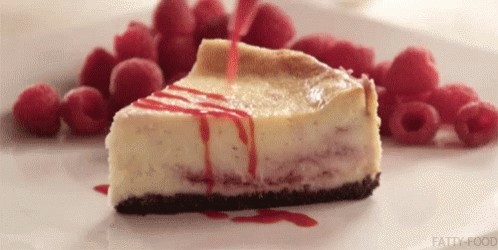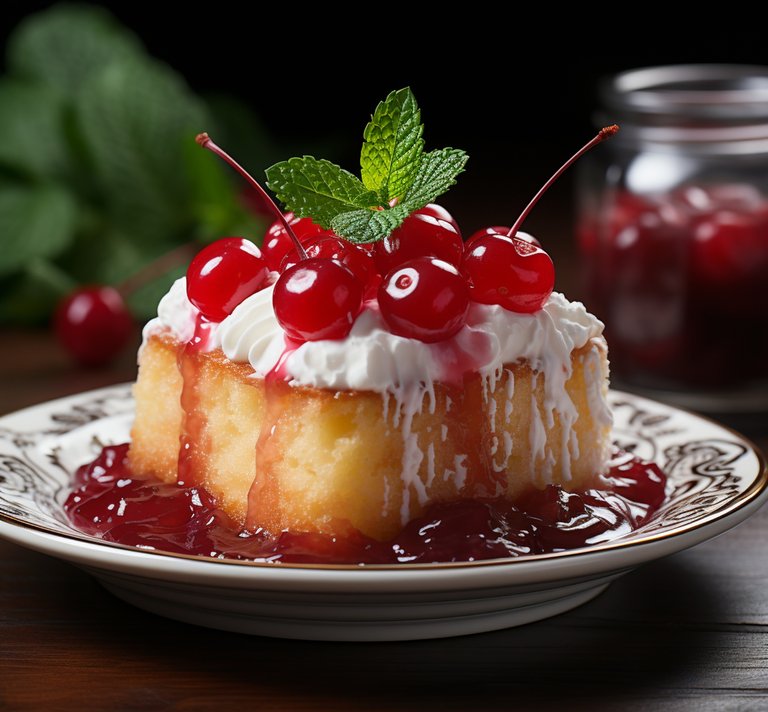I guess my #life today hasn't been as calm as other days, but it's nothing too serious. Outside these details, I have little to tell about my personal affairs. So, I can move on to what is the center of the daily publication, the Anniversary of #History that I chose for today. I have preferences for #food topics, even more so if they lead me to investigate and learn new things.
That happened again today. I found out it's 'Cherry Cheesecake Day'.
+++
Supongo que mi #vida hoy no ha sido tan calmada como otros días, pero no es nada que sea demasiado grave. Fuera de estos detalles, tengo poco para contar de mis asuntos personales. Así que, puedo pasar a lo que es el centro de la publicación diaria, la Efemérides de la #Historia que escogí para hoy. Tengo preferencias por los temas de #comida, más aún si me llevan a investigar y aprender cosas nuevas.
Eso sucedió de nuevo hoy. Me encontré que es el ‘Día del Cheesecake de Cereza’.
+++

Image's Source - Fuente de la Imagen
I remember being fond of this cake when I was a university student, because of a friend who invited me to eat it, and she was a big fan of this dessert. Over time, I learned that the cake we ate had different recipes depending on the city and country of reference. The one we ate was based on the New York recipe.
When researching for today's post, I thought that the origin of this cake was North American, and that it dated back to the beginning of the 20th century. But, sources pointed out to me that I was a little wrong. Written references to a cake that resembles Cheesecake can be located in Ancient Greece, approximately 2,500 years ago. The next reference comes from the Roman historian Cato the Elder (Marcus Porcius Cato), a fervent opponent of Hellenization, who recorded three recipes for cakes used in ceremonies. Cato, who died 149 years before our common era, was the first historian who wrote his works in Latin, and exalted his native language, recording various things in a monumental collection of books, of which we now only have fragments.
+++
Yo recuerdo haberme aficionado a esta torta cuando era estudiante de la Universidad, por una amiga que me invitó a comerla, y ella era muy amante de este postre. Con el tiempo aprendí que la torta que comíamos tenía recetas diversas según la ciudad y país de referencia. La que comíamos era basada en la receta de New York.
Al investigar para el post de hoy, yo pensaba que el origen de esta torta era norteamericano, y que se remontaba a inicios del siglo XX. Pero, las fuentes me señalaron que yo estaba un poco equivocado. Se pueden ubicar referencias escritas sobre un pastel que se parece a la Cheeesecake en la antigua Grecia, hace unos 2500 años aproximadamente. La siguiente referencia vienen del historiador romano Catón el Viejo (Marcus Porcius Cato), un ferviente opositor a la helenización, quien registró tres recetas de pasteles usados en ceremonias. Catón, que falleció 149 años antes de nuestra era común, fue el primer historiador que escribió en latín sus obras, y enalteció su lengua natal, registrando diversas cosas en una monumental colección de libros, de los que ahora solo disponemos fragmentos.
+++

Image's Source - Fuente de la Imagen
However, it was in the 18th century, when a yeast-free recipe appeared, that a #cake very similar to the current one was finally found. We then reached a further step, when in 1872, William Lawrence (Chester, New York) developed 'American Cream Cheese'. An element that is very important in the recipe that we consume today. So, after all, the cake does have quite a relationship with the city of New York. So, it can be said that the current cheesecake is a product of the 19th century.
At present, New York cheesecake bases are fairly stable, with a baked dough base, a generous dollop of sweetened cream cheese, and a topping that provides additional flavor. It is this topping that can define whether the cake is Chocolate, areequipe, Strawberry or (as is today's) Cherry.
Well, I have to say goodbye now. It was very difficult for me to summarize everything I wanted to publish so that it could fit into a little more than one page. And my day is already over. I hope you are well and that we can read again another time.
+++
Sin embargo, es en el siglo XVIII, cuando aparece una receta sin levadura, que por fin se encuentra una torta muy similar a la actual. Llegamos luego a un paso más, cuando en 1872, William Lawrence (Chester, New York) desarrolla el ‘Queso Crema Americano’. Un elemento que es muy importante en la receta que hoy en día consumimos. Así que, después de todo la torta si que tiene bastante relación con la ciudad de New York. Entonces, se puede decir que la actual torta de queso es un producto del siglo XIX.
En la actualidad, las bases de las tortas de queso, receta New York, son bastante estables, con una base de masa horneada, una generosa porción de queso crema endulzado y una cubierta que le brinda sabor adicional. Es esta cubierta lo que nos puede definir que la tarta sea de Chocolate, de arequipe, de fresa o (como es la del día de hoy) de cerezas.
Bien, me tengo ya que despedir. Me costó mucho resumir todo lo que quería publicar para que cupiera en poco mas de una cuartilla. Y ya se me acaba el día. Te deseo que tú estés bien y que nos podamos leer de nuevo en otra oportunidad.
+++

This challenge is an initiative of @flaxz
The 4 points to join the #IAmAliveChallenge, includes using the hashtag #alive to post to We Are Alive Tribe and earn ALIVE tokens.
Este desafío es iniciativa de @flaxz
Los 4 puntos para unirte al #IAmAliveChallenge, incluyen el uso de la etiqueta #alive para publicar en We Are Alive Tribe y ganar tokens ALIVE.






 -
- 
